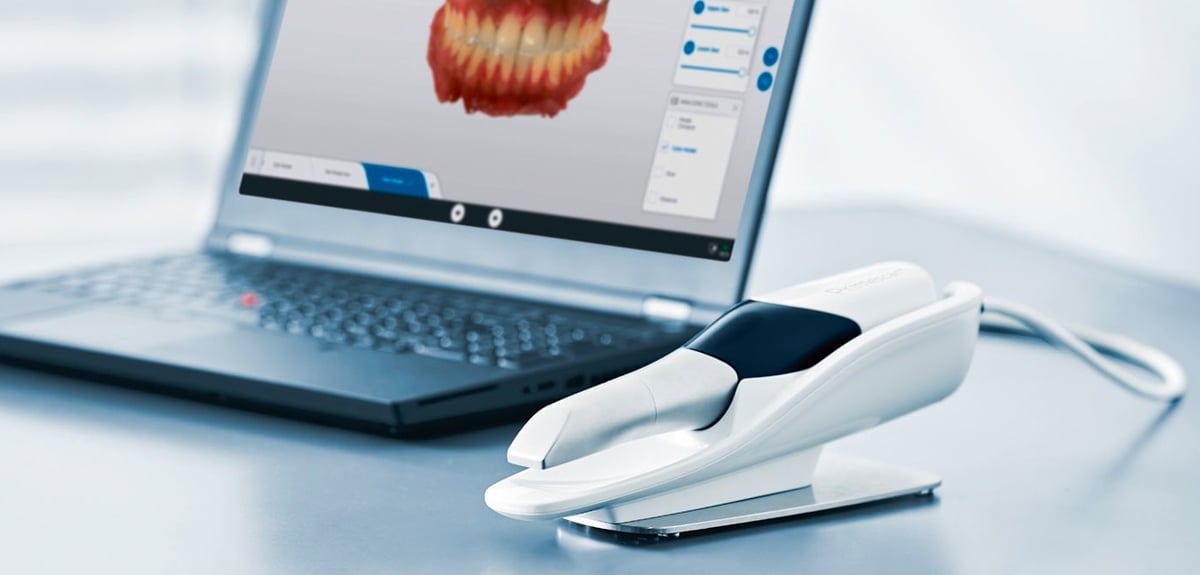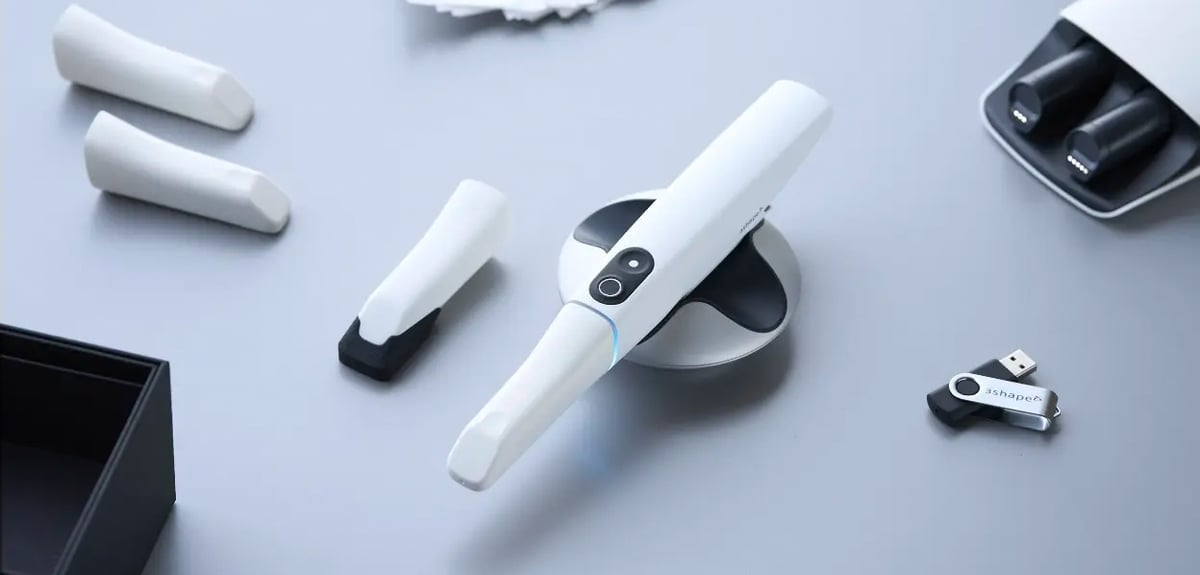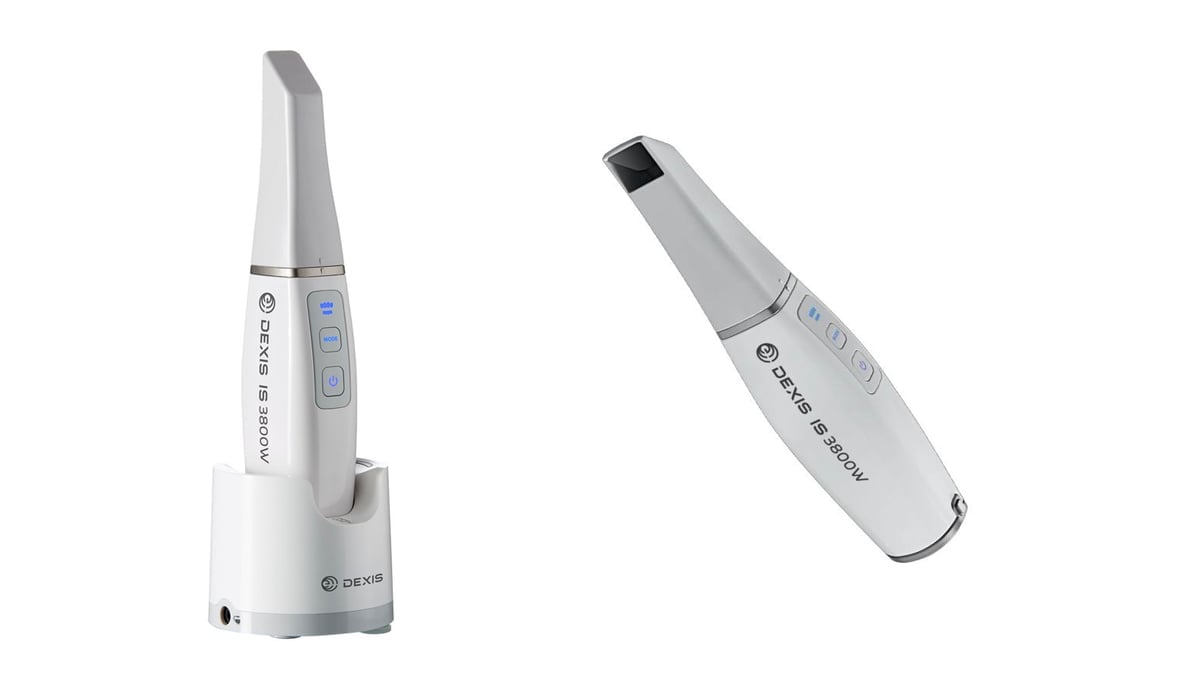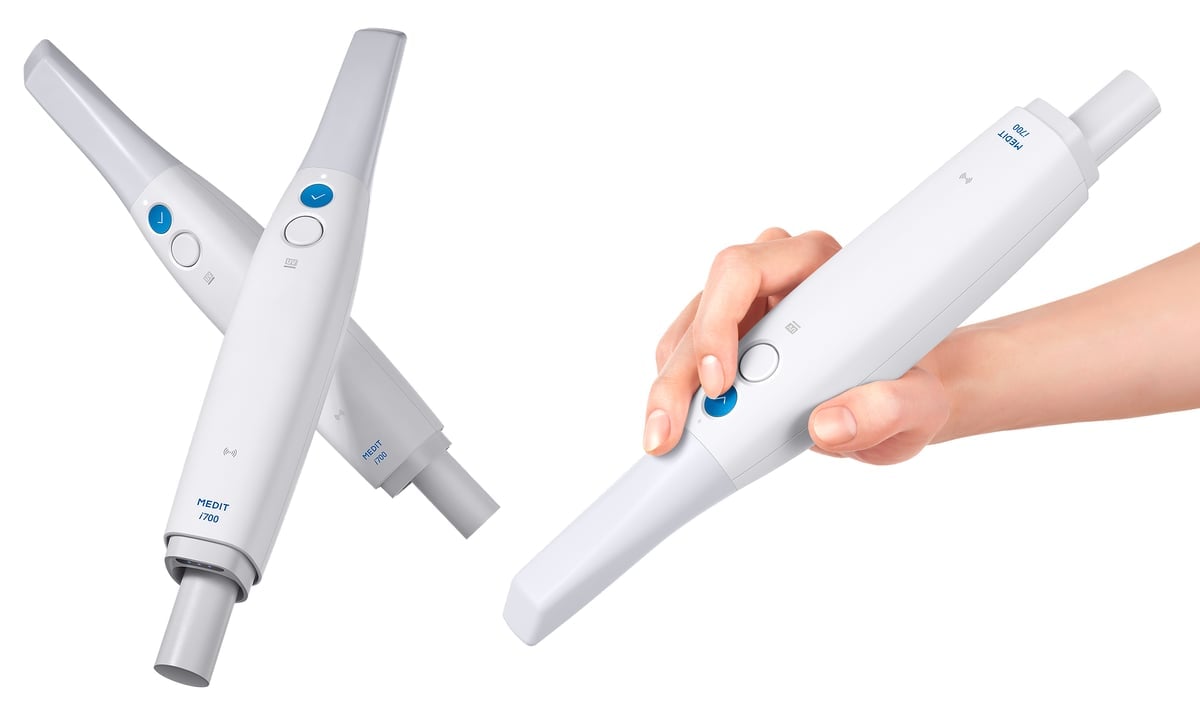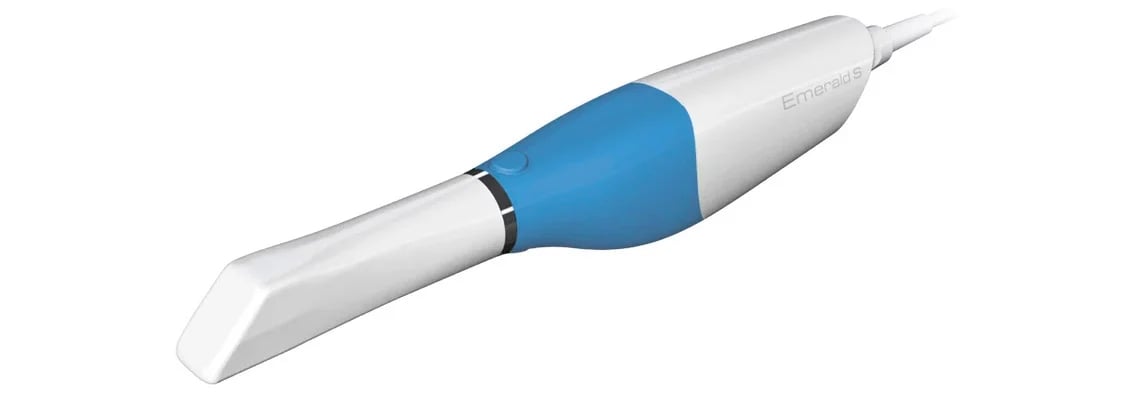No patient looks forward to gaging on a dental impression tray. For decades, biting down on a huge slab of plaster or acrylic molding goo was the only way to get a clean dental impression from which to fabricate dentures, crowns, implants, or aligners.
Fortunately, intraoral scanners (IOS) are becoming more popular in dentistry for various reasons. These scanning wands offer a relatively easy and patient-friendly way to create optical impressions of the inside of a person’s mouth. Plus, they’re more accurate and faster than casts. The scanners and accompanying software enable practitioners digital storage of study models, landmark identification, precise arch width and length measurements, tooth segmentation, and evaluation of the occlusion.
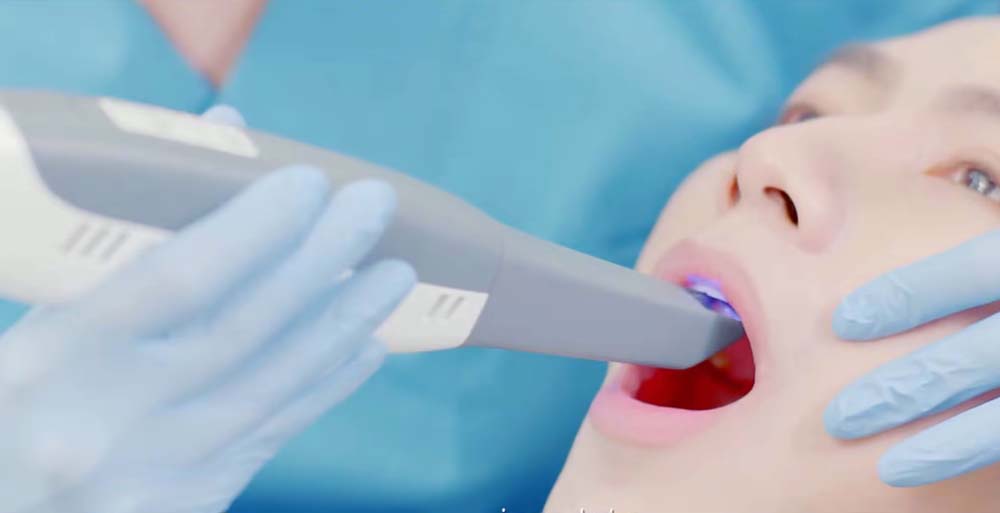
These handheld devices produce a full-color 3D model of a patient’s teeth and gums quickly. The 1:1 digital replica can then be used to diagnose abnormalities, aid in surgery, and create precision prosthetic devices.
The 3D scans can also be displayed instantly on a computer or touchscreen tablet for better communication and cooperation between patient and practitioner.
Let’s take a look at how these devices work and what you should look for when adding an intraoral 3D scanner to your practice.
| Scanner | Weight (g) | Price | Wireless |
|---|---|---|---|
| Dentsply Sirona Primescan Connect | 457 | $24,000 | No |
| Shining3D Aoralscan 3 Wireless | 330 | $14,000 | Yes |
| 3Shape Trios 5 | 299 | $26,000 | Yes |
| Dexis 3800W wireless | 240 | $20,000 | Yes |
| iTero Element 5D+ Mobile | 470 | $42,000 | No |
| Medit i700 Wireless | 328 | $20,000 | Yes |
| Virtuo Vivo from Straumann | 130 | $22,000 | No |
| Planmeca Emerald S | 229 | $13,000 | No |
| Launca DL-300 | 230 | ~$22,000 | No |
| 3Disc Heron | 165 | $17,000 | No |
How Intraoral Scanners Work
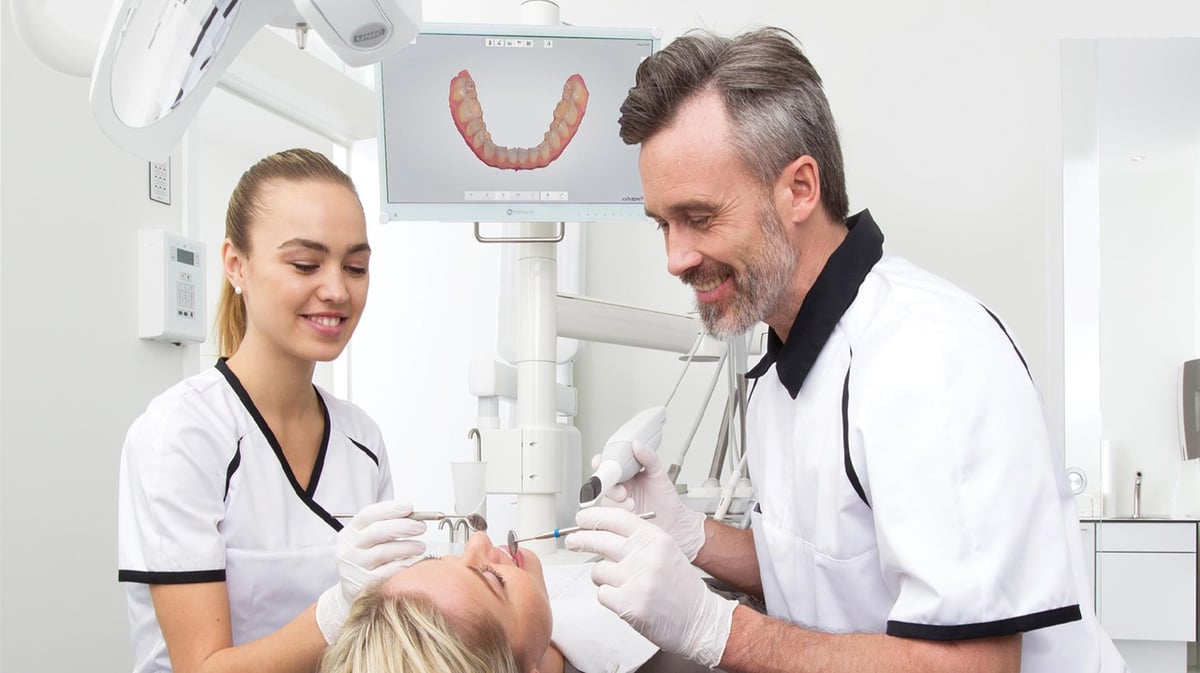
A scanning wand – about twice the size of an electric toothbrush – is inserted into a patient’s mouth to collect visual data. The dentist gently moves it around to get an impression of the teeth and gums from as many angles as possible. Unlike a cast that can only be inserted once, a scanner can scan an area over and over again until a full rendering of an entire arch is complete.
The scanners work by projecting a light source, such as a laser (with no heat or harmful effects) or structured light onto the patient’s dental arches. Images are then processed by scanning software that takes the data points generated by the device and combines them to create a “point cloud.” The software then triangulates the point clouds using mathematical models that analyze the data and create a final, precise 3D visualization of dentogingival tissues.
Scanner Software is Key
When oral scanner software turns captured images into digital models, those images can then be sent to internal or external labs that design and produce a prosthesis. In some cases, all of this can take place chairside, including 3D printing prostheses. If the scan is for diagnostics only, the dentist can show the patient their problem areas and use the image to develop a treatment or surgical plan.
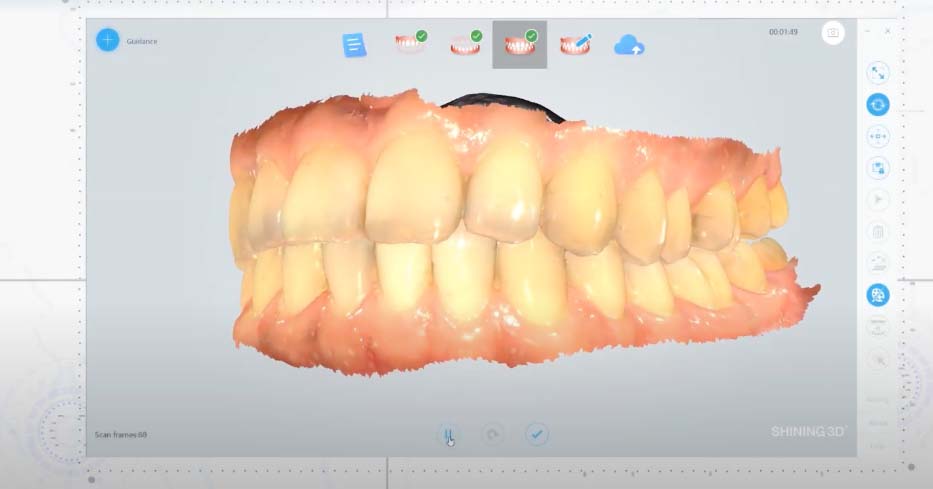
Software accuracy is key so that maximum data from the scans can be combined and stored. That’s why many intraoral scanners come with their own software to turn the captured images into these digital models.
Another major selling point of intraoral devices is their compatibility with other software suites and management systems popular in the dental market, so practitioners can export files to laboratories that may use different software. However, researchers have found that scanners with their own native software yield more accurate results and suffer less data loss than those that need to convert the image from a proprietary format into an open file format, such as Standard Tessellation Language (STL).
There are obvious advantages to these devices, including comfort, time efficiency, and better communication between practitioners and both their patients and laboratories. However, the devices are expensive, starting at about $12,000, and may require a learning curve.
In the end, patients will likely prefer the relative comfort of intra-oral scanners and be able to communicate more effectively with their dentists if they can see an image of their dental issues. Combined with the elimination of the exposure to radiation that some previous imaging techniques used and the time saved by being able to scan chairside in real-time, the cost-benefit analysis will likely work out in favor of these devices for most dental offices.
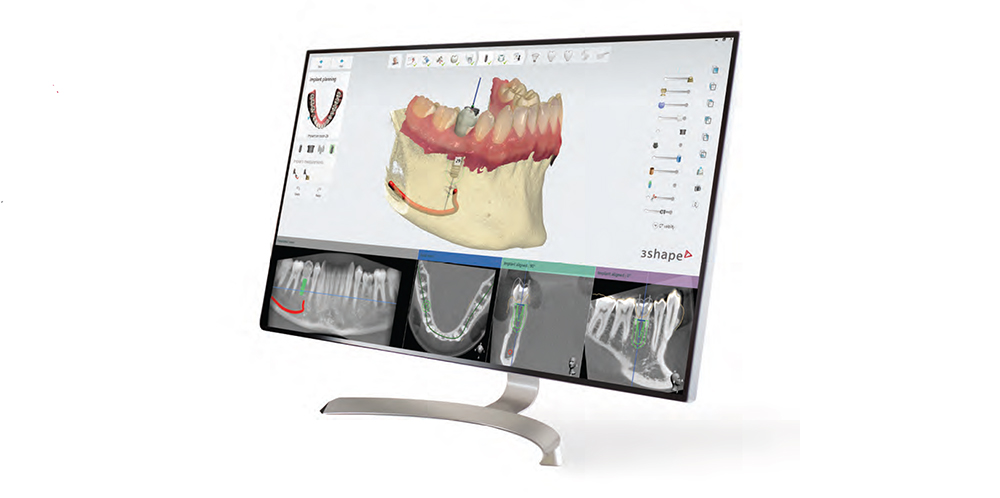
What to Look for in an Oral Scanner
In addition to ergonomics and price, here are some key software elements that make a big difference when purchasing an intraoral scanner:
- Speed. The speed at which the wand can capture images and transmit them to the screen to reduce the amount of time the patient spends in the chair.
- Scanning. Retracement abilities allow the same area to be scanned multiple times and seamlessly integrate all of the images into one final 3D digital model.
- Smart Data. AI capabilities that eliminate unrelated data.
- Color. Full-color streaming data capture and color matching technology that helps create a 1:1 model of a patient’s arches.
- Integrations. Easy integrations that allow for optimal workflow within the office or with third-party systems in laboratories that produce the prosthetics. This includes 1) the ability to export files in multiple formats, including STL, PLY, DCM, and OBJ files; and 2) the ability to connect to third-party workflows without the degradation of data.
- Sneak Peek. Historical and predictive modeling lets the practitioner show the patient the progress of the damage and/or how the proposed intervention will improve their dental health.
- Hidden Costs. Factor in the sometimes hidden costs of monthly software subscription fees and proprietary consumables.
Top Intraoral 3D Scanners
These scanners and their accompanying software are some of the most well-known on the market. Here, we explore what makes each special.
Dentsply Sirona Primescan Connect
The Primescan, from US-based dental tech giant Dentsply Sirona, is one of the highest-resolution scanners on the market with more than 1,000,000 3D points per second to achieve extremely photorealistic digital models. It also has dynamic depth scan technology that produces sharp images up to a depth of 20 mm for patients with deeper-lying conditions. The Primescan also gives practitioners access to hard-to-reach areas and an increased field of view so they can immediately visualize larger areas on the touchscreen with fewer sweeps of the scanner.
Primescan Connect is a laptop-based version of the company’s cart-based Primescan intraoral scanner. It is powered by the cloud platform DS Core, which now has new features, as well as the DS Core Care service program. The price includes a laptop.
Shining3D Aoralscan 3 Wireless
The China-based Shining3D’s Aoralscan 3 Wireless is the company’s first wireless intraoral scanner with built-in Wi-Fi 6 technology. It comes with three batteries included in the case, providing up to two hours of continuous scanning for each charge. It offers faster data post-processing speed and self-developed, clinic-friendly functions, including orthodontic simulation, model creator, temp design, indirect bonding tray design, and oral health report, the company says.
The device uses structured light triangulation to produce data in real-time and with realistic color. Its motion-sensing technology allows users to scan at 15 frames-per-second and its automatic retracement capabilities allow an area be scanned over and over again while adding new data until the image is complete. AI allows the product’s software to delete miscellaneous artifacts for fully optimized data.
The company has a suite of products, including a cloud data platform that allows for a seamless workflow either within a practice or between dentists and lab technicians. Practitioners also have the option to become a full-service center by connecting directly to a DLP 3D printer to create products such as working models, orthodontics models, implant models, metal crowns and bridges, and partial frameworks.
3Shape Trios 5
The Trios 5 intraoral scanner by 3Shape is designed to be ready instantly with smart tips featuring instant-heat technology and a tip-change alert system. The new scan assist feature lets you can scan your patients in any direction you want and create a scan path that works best for you.
The company also reports a battery life that outlasts similar devices by up to 30%, allowing practitioners to see 2-3 times as many patients without waiting for the device to be ready. The Trios 5 uses LED technology as well as fluorescent technology for the detection of surface caries. It can be a wired or wireless device and accommodates PLY, DCM, and STL output formats.
This device has one of the most comprehensive software suites of any IOS. These come in the form of “studio apps,” allowing patients a better and more personalized visual experience so they can be engaged in the formulation (and subsequently acceptance) of their proposed treatment. Trios Patient Monitoring tracks historical changes in a patient’s oral health while the Treatment Simulator generates 3D simulations of their orthodontic outcomes. The Trios Smile Design app creates a shareable picture of a patient’s potential future smile that they can take with them. The Design and Implant studio apps allow for the creation of a broad range of restorations as well as temporary prosthetics and surgical guide plans.
Dexis 3800W wireless
Envista acquired the intraoral scanning business of Carestream Dental in 2022 and rebranded it as Dexis, still offering the same products practitioners have come to rely on, while introducing the new IS 3800W wireless.
The IS 3800W IOS offers up to one hour of continuous scanning, a charging station, back-up power cable, and optional extra batteries and a charging unit to ensure the scanner is always ready for use.
Dedicated point-to-point WiFi access ensures a robust and stable transmission for a continuous and efficient scanning procedure, the company says. The scanning speed is 25 seconds for a single arch.
The IS 3800W handpiece features an embedded sensor that lets you orient the digital model on the screen by simply rotating the scanner, eliminating the need to use the mouse.
iTero Element 5D+ Mobile
The iTero IO scanners are made by Align Technology, the US-based creator of the popular Invisalign. Its six scanners include the iTero Element Plus Series, iTero Element 5D, iTero Element 2, and iTero Element Flex. Each can scan an entire arch in as little as 60 seconds, making the experience even less stressful for the patient, the company says.
The Element series’ software platform is what makes the unit fast and reliable, and while they are capable of connecting to third-party workflows by sending digital impressions to the lab of their choice, the device is most effective when used with the company’s Invisalign system. What makes this system most unique is the iTero TimeLapse system which allows practitioners to compare historical patient records to visualize tooth wear, movement, and gingival changes over time.
The iTero Element 5D+ comes with a HD touch screen computer and features what the company calls near-infrared imaging (NIRI) technology to detect and monitor interproximal caries above the gingiva in real time. There’s also an Invisalign Outcome Simulator that keeps patients engaged and treatments. The iTero cloud facilitates restorative STL files with lab partners.
Medit i700 Wireless
Medit, the Korea-based global dental technology company, frontloads the specs for its new, upgraded i700 device with an LED light source that captures up to 70 frames per second with a scan area of 15 x 13 mm. One of the main selling points of this device is 3D in-motion video technology that allows for full-color streaming capture. Not only do smart-scan filters eliminate unwanted data from the final image, but the i700 can take a more comprehensive scan to include both face and bone data.
Their cloud-based service allows practitioners to use their preferred software or export data as STL, PLY, and OBJ files. The device can also be connected directly to a PC using a power delivery cable, making it portable.
Virtuo Vivo from Straumann
The Virtuo Vivo, from Swiss medical group Straumann, is one of the smaller devices on the market, even as it includes four miniature cameras and one projector in its tip to make getting a comprehensive tooth and soft tissue scan from every angle much easier. By scanning the inside of the mouth from multiple angles simultaneously, it claims to capture areas that are normally difficult to reach. This makes the overall experience much less uncomfortable for the patient. It also scans in real color.
With voice and gesture control and a laptop plug-in option, the Virtuo Vivo aims to be one of the more mobile IOS devices on the market. It also lets practitioners to use the renderings with other in-house systems via an open STL or DWOS Connect data export for a complete chairside workflow. This open ecosystem allows data to be sent via these same methods to a lab for design and manufacturing.
Planmeca Emerald S
By using red, green, and blue lasers as its light sources, as well as projected pattern triangulation, and a radiation-free near-infrared light, the upgraded Emerald S scanner allows for quick and accurate oral scanning and lets clinicians see through the tooth to detect caries and cracks in their earliest stages. Finland-based Planmeca claims their device is among the most comfortable for patients as it includes both a standard and a SlimLine tip (in addition to the caries-detecting Cariosity tip). A tooth shade assistant helps simplify the color-matching process, and scanning an entire arch can take under a minute for a seasoned user.
The Emerald S supports imports and exports in both the STL and PLY file formats and its Romexis LabApp software offers an easy and secure application for sending intraoral scans or other types of image data to dental labs.
Launca DL-300
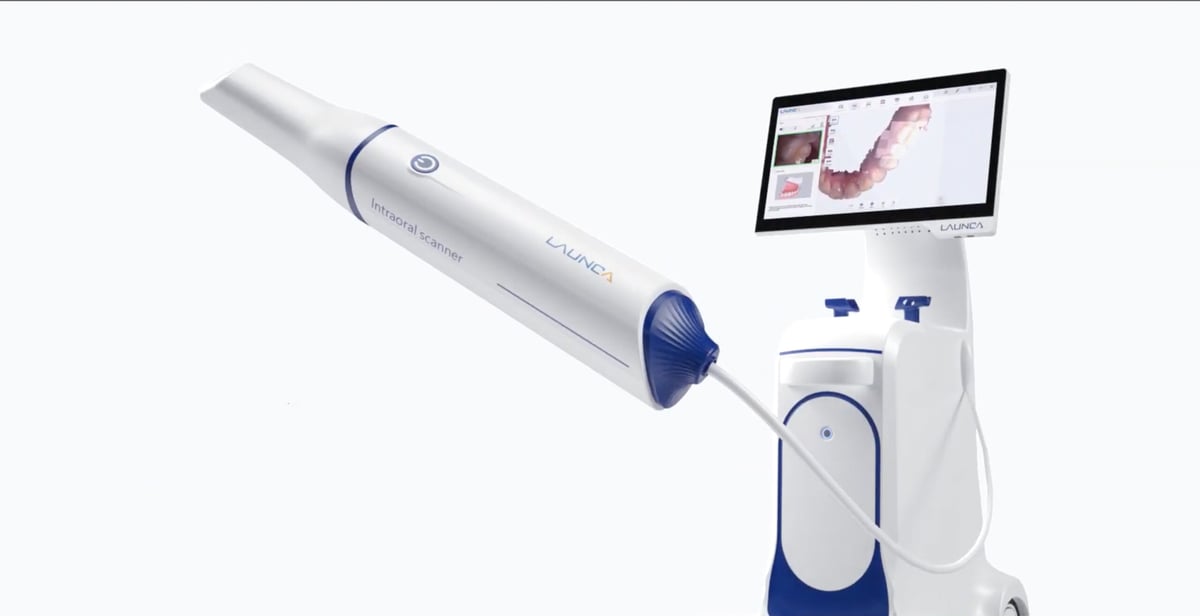
Launca Medical, based in China with global distributors, launched its latest scanner, the Launca DL-300 Series Intraoral Scanner, in 2023. The new scanner features AI technology, allowing for effortless and cleaner scanning with speed while ensuring high accuracy, the company says.
The DL-300 wireless is the company’s lightest weight and most powerful intraoral scanner with up to 60 minutes of continuous scanning. It features a 17 mm x 15 mm field of vision, 20 mm scan depth, ergonomic design, and two tip size options.
The DL-300 has a new software user interface and adds several new functions, including ortho simulation, remote control, and is equipped with a cloud-based software platform to streamline workflow between dentists and their partner labs.
It’s unclear if the DL-300 will replace the company’s DL-206.
3Disc Heron
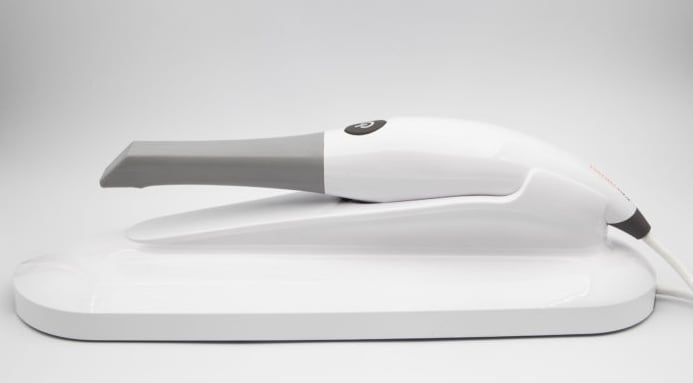
US-based start-up 3Disc makes the Heron intraoral scanner coupled with the HeronCloud case-sharing platform that makes it easier to create and browse patient cases, scan, and share with labs. In 2023, at the International Dental Show in Germany, the company launched it Ovo intraoral scanner with a host of new features.
Within the 165 grams of the Heron scanner, 3Disc combines three technologies: an intraoral scanner, a dental camera, and dedicated software to follow the evolution of each patient’s dental health over time.
Heron Cloud enables exports in STL, OBJ, and PLY, offering direct integration with DWOS and Exocad, enabling your practice to work with all open CAD systems on the market, the company says.
Lead image source: iTero intraoral scanner
License: The text of "The Best Intraoral Dental Scanners" by All3DP Pro is licensed under a Creative Commons Attribution 4.0 International License.

